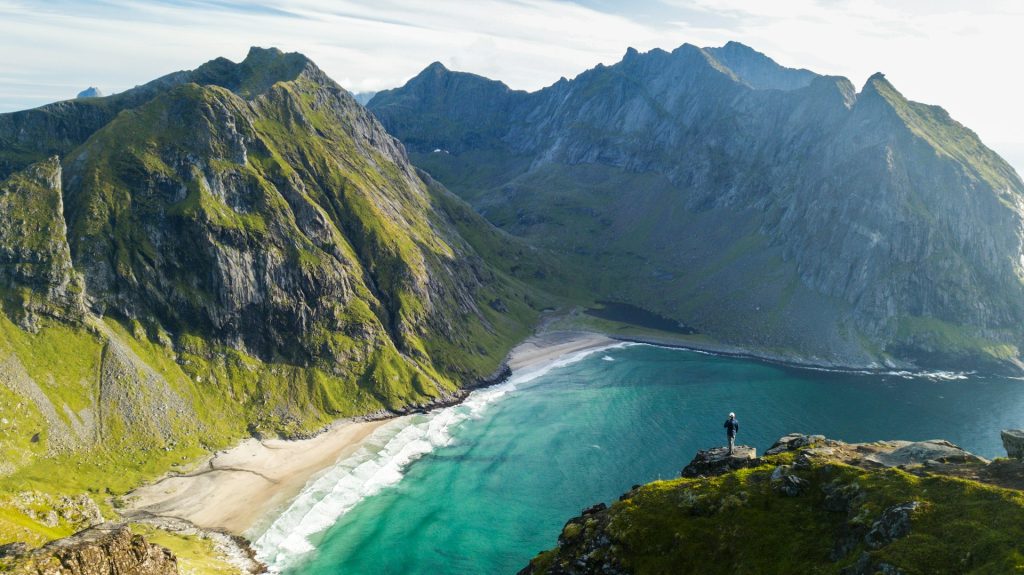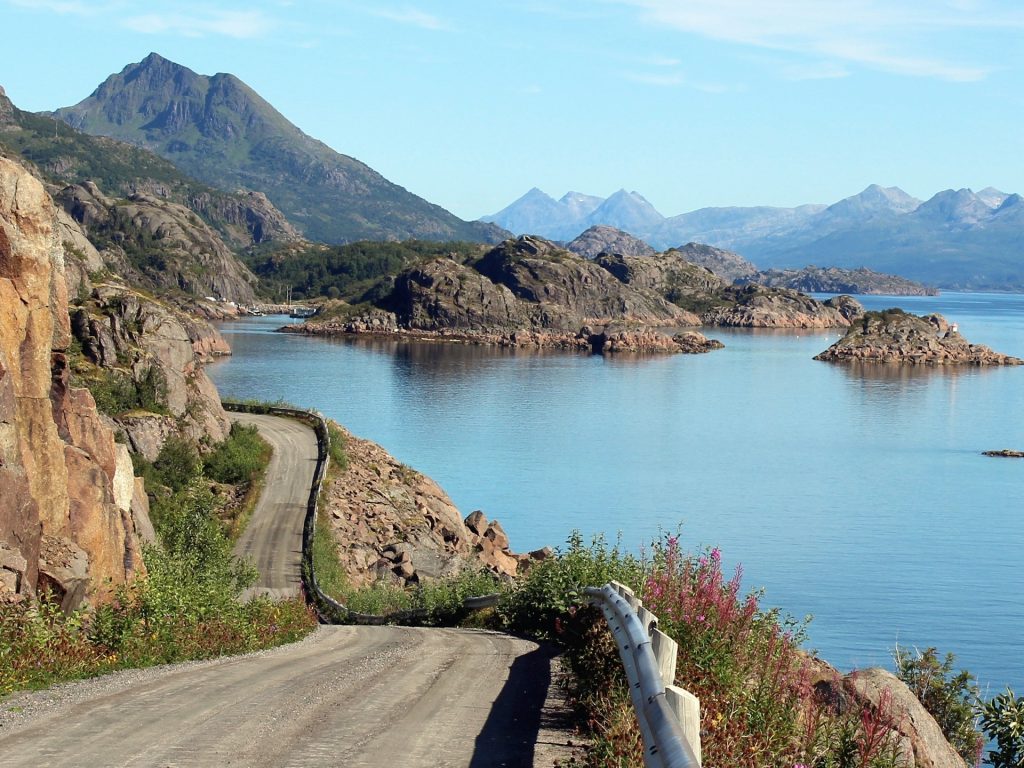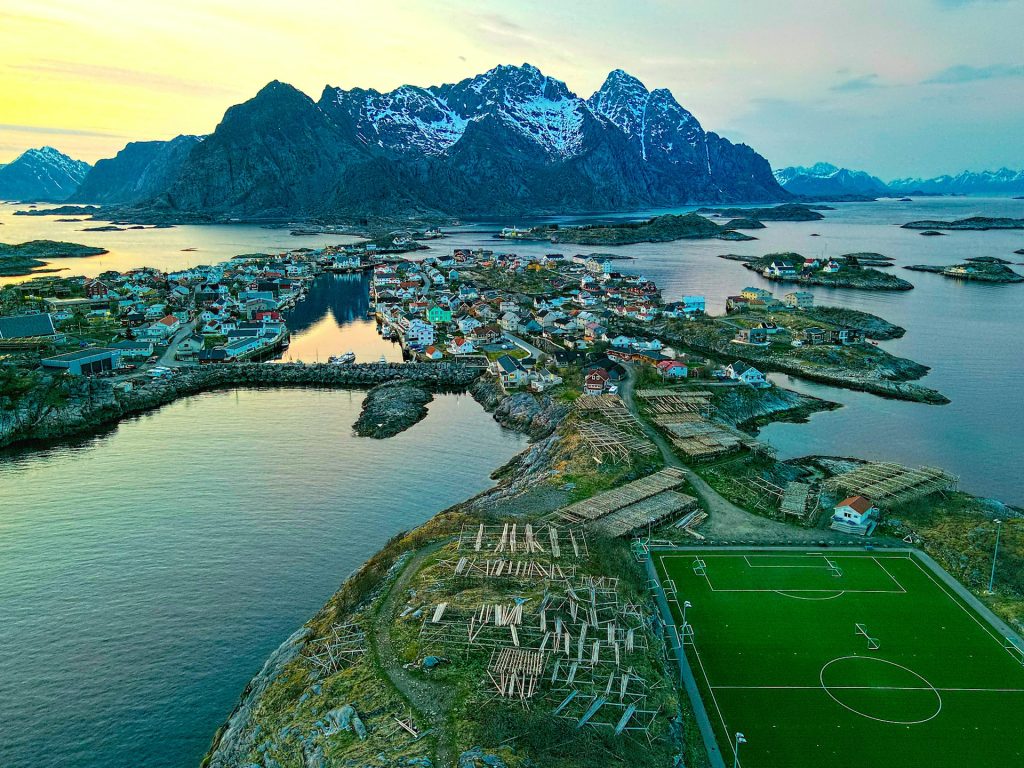Lofoten is where jagged mountains crash into the sea, fishing cabins glow red against turquoise bays, and the midnight sun refuses to set. As a Norwegian who has spent years visiting for work and play, I can tell you this archipelago is every bit as dramatic as the photos. The trick is planning with the seasons, distances, and fickle weather in mind, so you spend more time exploring and less time stuck in a queue on the E10.
If you want the short version: come for at least three full days, rent a car, base yourself in two places to cut driving, and plan one weather-flex day. Summer is best for hiking, winter is best for the aurora, and spring or autumn gives you fewer crowds with plenty of daylight. Book rorbuer early, watch road conditions, and bring layers even if the forecast looks friendly.
Let’s take a deeper dive into the world of travel in Lofoten.

Where Exactly Is Lofoten and How Do You Get There
Lofoten sits off the northern coast of Norway in Nordland county, strung like a necklace of islands from Austvågøy in the east to Moskenesøy in the west. The main road is the E10, which runs the length of the islands and crosses a series of bridges. Distances look short on a map, but views and narrow curves slow you down. Plan for unhurried driving.
By air: The smoothest entry is to fly to Harstad/Narvik Airport Evenes (EVE), pick up a rental car, and drive 2.5 to 4 hours depending on where you stay. If you can snag flights into Leknes (LKN) or Svolvær (SVJ), you will land even closer, with smaller planes and often higher fares.
By ferry: From Bodø you can sail to Moskenes, which drops you right in the scenic west near Reine and Å. In summer, book ahead if you have a car. Without a car, you can connect by bus to villages along the E10.
By train plus bus: Take the train to Bodø or Narvik, then continue by ferry or bus. It is slower, but the scenery makes up for it if you enjoy an overland route.
How Many Days Do You Need
If you are flying all the way here, three nights is the absolute minimum to catch a good weather window. Five to seven nights lets you split time between east and west, avoid backtracking, and include a rest day in case of storms.
A simple split that works well:
- 2 to 3 nights around Henningsvær or Svolvær for galleries, sea safaris, and shorter hikes.
- 2 to 4 nights around Reine, Hamnøy, or Sakrisøy for iconic peaks, beaches, and evening light.
Best Time To Visit Lofoten
Lofoten changes personality with the calendar. Pick the season that matches your goals.
Summer, mid June to August: Midnight sun, endless hiking, kayaking, and beach days. It is busy, so book early. Pack a sleep mask. Even when it is warm in Oslo, expect brisk coastal air and water temperatures that reward wetsuits.
Early autumn, September to early October: Quieter trails, warm ocean colors, and the first northern lights. Days shorten quickly, but you still get good daylight for hikes. It can be the sweet spot for fewer crowds and lower prices.
Winter, late September to March: Darker days, stormy drama, and aurora season. Photographers love the low light and blue hour that lasts. You will need winter tires, patience for changing conditions, and flexible plans. If you are new to winter driving, consider basing in one spot and joining guided tours.
Spring, April to May: Melting snow, returning seabirds, and calmer tourism. Trails can be muddy or icy in shaded sections. Fishing life is in full swing during skrei season earlier in the spring.

Getting Around: Car, Bus, Or Tour
The bus network along the E10 is reliable but infrequent. It works if you base yourself in one town and plan carefully. For freedom to chase clear skies or sunsets, rent a car. Reserve early in summer and winter. Parking is limited at popular trailheads, so arrive early or late, and never block private drives or emergency access.
Guided tours are excellent for specific activities like sea kayaking, RIB sea eagle safaris, surfing at Unstad, or aurora chasing in winter. They provide gear and local knowledge, which is worth it when weather turns.
Where To Stay: Villages And Rorbuer
Rorbuer are traditional fishermen’s cabins on stilts over the water, now modernized with small kitchens and cozy bedrooms. They book out first because everyone wants that postcard view. If you cannot find rorbuer, do not worry. Guesthouses and apartments in villages like Svolvær, Kabelvåg, Henningsvær, Leknes, Ramberg, Hamnøy, Reine, and Å put you close to the things you came for.
- Svolvær and Kabelvåg: Good base for boat trips, galleries, and restaurants. Easier logistics year-round.
- Henningsvær: Pretty harbor, art scene, and the famous football pitch perched over the sea.
- Reine, Hamnøy, Sakrisøy: The iconic shot of red cabins beneath spiky peaks. Ideal for sunrise and sunset lovers.
- Ramberg and Flakstad: Access to Rambergstranda and Skagsanden beaches, plus shorter drives to Kvalvika and Unstad.
- Å i Lofoten: End-of-the-road village, great for slow mornings and maritime history.

What To See And Do
Classic viewpoints and short walks
- Reinebringen: Steep stone steps to an outrageous panorama of Reinefjorden. Start early to avoid crowds and afternoon haze. The trail is safe when dry but slippery in rain and closed at times in winter.
- Haukland and Uttakleiv: Twin beaches with an easy coastal path between them. Perfect for an evening walk under the midnight sun.
- Mannen or Offersøykammen: Accessible peaks with big views for a modest effort.
Beaches and water
- Kvalvika and Ryten: Golden sand backdropped by cliffs, with the option to continue to Ryten for the Instagram-famous ledge. Muddy after rain. Wear proper boots, not fashion sneakers.
- Unstad: Surfing capital of the north. You can rent suits and boards, join lessons, and warm up with cinnamon rolls at the café.
- Skagsanden: Good for long strolls, tide patterns for photographers, and winter aurora reflections.
On the sea
- Kayaking: Calm days in Reinefjorden or around Skrova are magic. Join guided trips for safety and to read currents.
- RIB safaris: Fast boats zip around dramatic cliffs, with high odds of sea eagles. Dress warmly, even in July.
Culture and history
- Lofotr Viking Museum in Borg: A reconstructed chieftain’s longhouse where you can step into Iron Age life, taste traditional food, and try axe throwing.
- Nusfjord and Å: Preserved fishing villages that show how cod built this region. Small museums and smell of stockfish in season.
- Galleries and glassworks: Henningsvær and Kabelvåg have a solid arts scene worth a slow afternoon.
Food And Local Specialties
Cod rules here. In winter and spring, skrei is served fresh. You will also see stockfish drying on racks, a tradition that shaped Lofoten’s economy for centuries. Try fish soup, grilled cod, or clipfish dishes. Bakeries surprise many visitors with quality pastries and good coffee. Note that most shops are closed on Sundays. Gas stations become your lifeline for snacks and basics.
Sample Itineraries
Three days
- Day 1: Arrive Svolvær or Henningsvær, stroll the harbor, evening sea eagle safari.
- Day 2: Drive west with stops at Haukland and Uttakleiv, overnight near Reine.
- Day 3: Hike Reinebringen in the morning, kayak or village hop in the afternoon, ferry or drive out.
Five days
- 2 nights around Svolvær for boat trips and a shorter hike like Djevelporten.
- 3 nights around Reine or Ramberg for Kvalvika, Ryten, and a flexible beach day.
- Slot a weather-flex day where you chase the best sky.
Winter long weekend
- Base in Svolvær or Henningsvær. Do a RIB trip, visit Lofotr on a windy day, and join an aurora tour. Keep driving to a minimum if storms are in the forecast.
Hiking And Safety Tips
Trails can be steep, wet, and poorly marked compared with what some travelers are used to. Check conditions, wear boots with grip, and pack layers, hat, gloves, and a headlamp outside midsummer. Even short hikes feel alpine. If a summit sits in cloud and the wind is howling, switch to a beach walk. There is no shame in turning around.
Respect private property, stick to paths to protect fragile vegetation, and follow the Norwegian right-to-roam principle responsibly. Leave no trace, carry out all rubbish, and use toilets where available. Drones have restrictions near airports, settlements, and wildlife. Check local rules before flying.
Driving The E10 Like A Local
The E10 is narrow in places, with blind crests and photo-worthy views around every bend. Use pull-outs for photos, not the shoulder. Keep speed even, leave extra space to the car ahead, and expect sudden stops when a reindeer appears. In winter, roads are plowed quickly, but ice lingers in shaded corners. If you have never driven on snow, let tours do the heavy lifting or rent studded-tire cars and keep distances long.
Fuel up when tanks dip below half. Distances between stations are not huge, but detours add time. If you are carrying food, store it cold. Weather changes fast and a picnic in the car can save a mood.
Practicalities And Budget
- Cards over cash: You can pay for almost everything with a card. Cash is rarely necessary.
- Prices: Norway is not cheap. Self-catering breakfasts and one cooked meal out per day help. Grocery stores like Coop and Rema 1000 keep costs down.
- Packing list: Waterproof jacket and pants, insulating midlayer, sturdy footwear, hat, gloves, sunglasses, sunscreen, bug spray for still summer evenings, and a reusable water bottle. Tap water is excellent.
- Connectivity: Mobile coverage is good along the E10 and in villages, patchier on remote trails.
- Respect nature: Do not step on drying stockfish, do not trespass on racks for photos, and keep noise low late at night. Locals live and work here year-round.
Photography And Light
Summer gives soft light at night and harsher midday glare. Plan your marquee shots for late evening or very early morning. Autumn and winter deliver long golden hours and pastel skies. For northern lights, you want clear, dark skies and patience. Apps help, but forecasts change by the hour. A thermos and a windproof layer help you stay out long enough to get lucky.
Final Local Tips
If forecasts look rough, that is Lofoten saying try plan B. Museums, cafés, and slow drives between fishing villages are part of the charm. If the sky opens, grab your bag and go. The best days begin with a flexible plan and end with salty hair and a grin.
Most of all, give yourself time. Lofoten rewards those who slow down, chase a patch of blue sky, and let the islands set the pace.